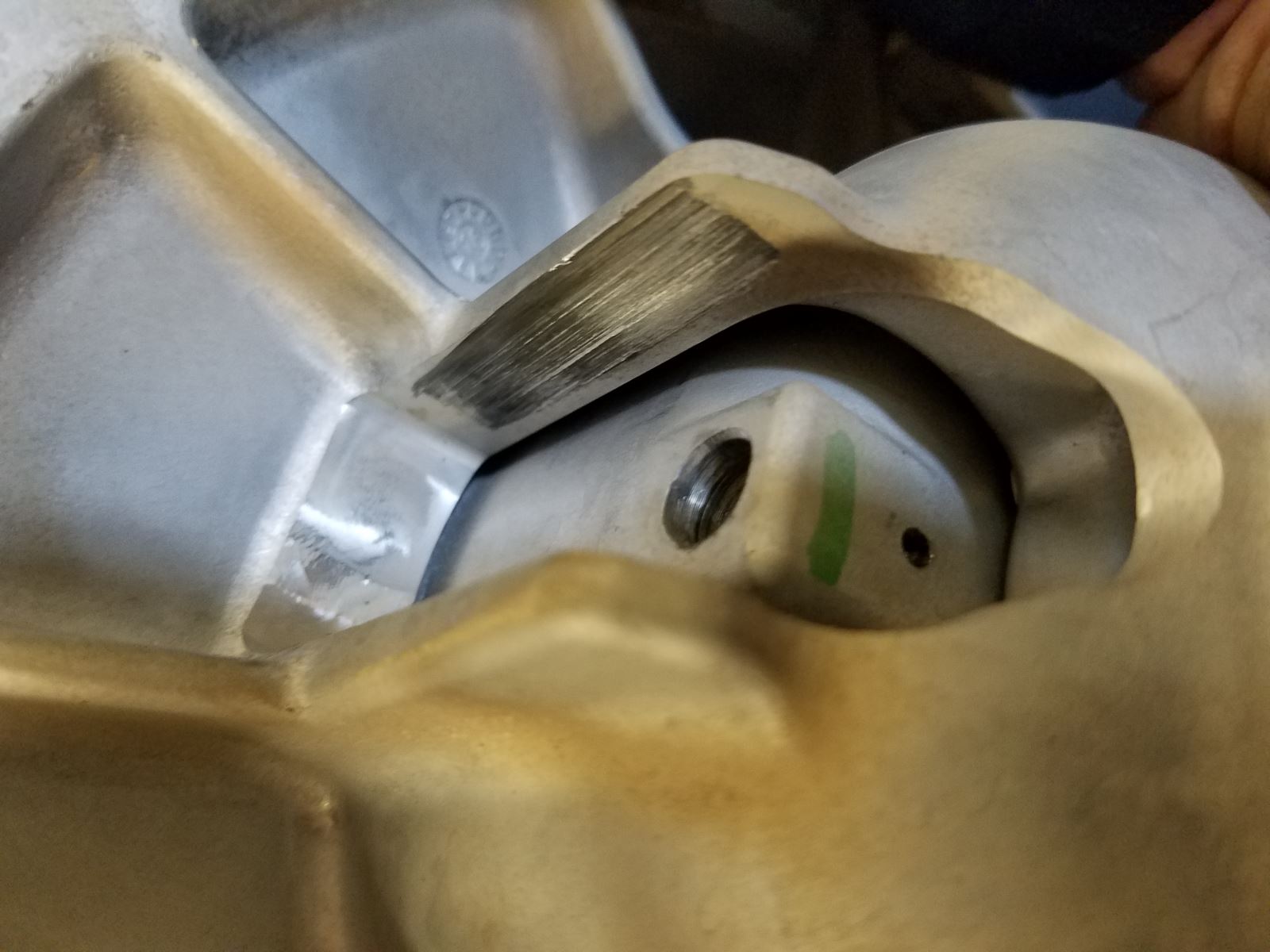
Looking For Cracks
If you ever see a crack starting on a clutch sheave (typically found on the drive clutch where the shaft and the sheave meet), discontinue use immediately and replace the clutch. Even a small crack, when exposed to heat, vibration and centrifugal force, will propagate quickly, ending up in a broken clutch. While cracks in sheaves are not that common, it is something to keep an eye open for because if it breaks at high rpm, usually it will fly into the driven clutch with enough force to damage the driven beyond repair, not to mention tearing up the clutch cover. Having to purchase both clutches and an inner and outer clutch cover is an expensive repair that can be avoided by a periodic inspection. I would recommend this be done at least annually depending on use.
When reinstalling the clutch cover, ensure that the seal is in place. Failure to do so can allow water ingestion into the clutch cover during creek crossings and such. This will result in belt slippage, premature wear and clutch failure. There is a drain plug in the bottom of most clutch covers. If you suspect you have water in your cover, pull the plug and drain it. Let the clutches dry or pull the clutch cover and dry the clutches and the cover. Even a small amount of moisture on the clutches can cause them to slip on the belt, creating lots of heat and damaging the belt and clutches if use continues.
In my opinion, everyone should carry a spare belt, the tools to change it and bone up on the knowledge to perform the task quickly in the field. Even though belts are very durable, they can break and usually when this happens, you will be out in the middle of nowhere. To keep from being stranded or having to be towed back on a short leash, keep a spare belt and the tools to change it somewhere in your car. I typically carry a clutch cover removal tool and a driven clutch compression tool. SLP offers these specialty tools as a kit. They are relatively inexpensive and make the job pretty easy. Most belts can be changed in 15 to 30 minutes time.
Should you blow a belt, make sure to clean all the belt pieces out of both clutches and the clutch cover exhaust duct. Check behind the clutches to make sure there are no belt strings wrapped around the PTO end of the crankshaft or the input shaft of the transmission. If you suspect strings are in those areas, discontinue use immediately, as they will take out the seals in very short order. Get the tools to remove the clutches and clean the belt strings out before running the vehicle. Also, clean the belt tracks off the sheaves of the clutches with a maroon Scotch Brite pad. Use light, equal pressure and keep from sanding in just one area. Scuff up both sheaves in a cross hatch pattern as this will remove the glazing (polished surface) from the clutch sheaves and will give better traction on the belt and better performance.
With regular maintenance, your clutches will function properly and deliver your horsepower to the ground. I am often asked, “How long should one expect clutches to last?” My answer always is, “That depends on how the UTV is ridden and maintained.” Let me assure you that performing the proper maintenance will substantially increase the life of your clutches and provide many miles of trouble-free use.
(Mathews is part owner of Starting Line Products in Idaho Falls, ID. For more information, visit www.startinglineproducts.com).

